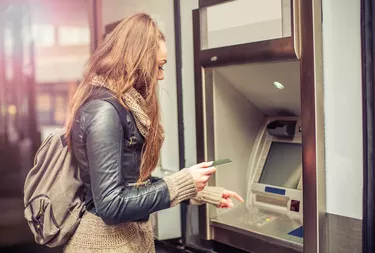
You can use a debit card to access money at an automated-teller machine, ATM, to get a cash advance in a bank or to make a purchase at a point-of-sale terminal. However, there are several circumstances in which your bank can deactivate your debit card and, therefore, limit your access to the funds in your account.
Negative Balance
Video of the Day
When you use your debit card to make a purchase you can either sign up for the purchase or enter your personal identification number into the point of sale, POS, terminal. If you sign up for your purchase then the vendor obtains a preliminary approval from the card processing network as opposed to your bank. The processing network may approve the transaction before obtaining authorization from your bank. Therefore, some banks deactivate the debit cards of people who have negative balances to prevent them from becoming even more overdrawn as a result of making more debit card purchases.
Video of the Day
Unusual Activity
Over the course of time your bank builds up a customer profile that includes information about your typical banking habits, such as when and where you use your debit card. If you normally just use your debit card for small transactions in your local community, your bank would view a large dollar transaction involving your card that occurred in another nation as unusual. As a precaution against theft or fraud, your bank may deactivate your card as a result of "unusual activity." Once you have contacted your bank to resolve the issue your bank can reactivate or replace your card.
Bank Failure
The Federal Deposit Insurance Corporation, FDIC, regulates banks and has the power to close down banks that become insolvent. Generally, account holders face minimal disruption when a bank goes bankrupt because the FDIC normally brokers a deal to have another bank immediately assume the failed bank's assets. However, if the FDIC fails to broker such a deal then your debit card may become deactivated since your bank no longer technically exists. Once the FDIC finds a buyer for your bank, that new bank will issue you a new card.
Expiration
On the back of any debit card you will find a magnetic strip and that strip contains your account information. ATM and POS machines must read that strip to process your transactions. However, the strip gradually erodes over time and becomes harder for machines to read. Additionally, details on the front of your card including your name and card number gradually get worn away. Consequently, banks program debit cards to deactivate at a certain point in the future and automatically send you out a new card at about the time that your worn out card becomes inactive.